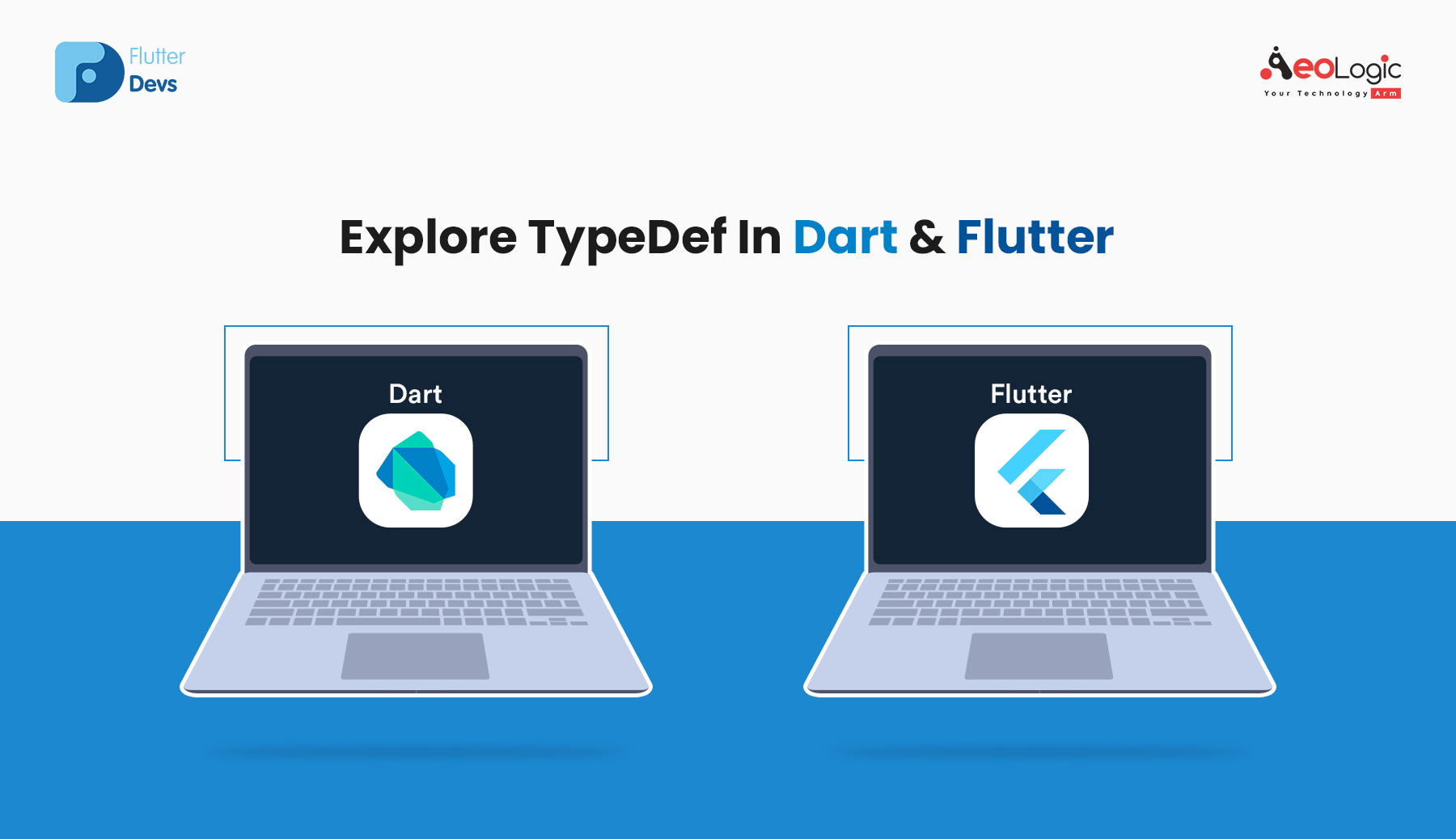
老铁记得 转发 ,猫哥会呈现更多 Flutter 好文~~~~
微信群 ducafecat
b 站 https://space.bilibili.com/404904528
原文
https://medium.com/flutterdevs/explore-typedef-in-dart-fluter-6dd102fdf5f9
参考
正文

在这个博客中,我们将探索 TypeDef In Dart & Fluter。它告诉你在 Dart 中使用 typedef 的最好方法。它同样工程在 Flutter 和有一个利用例子在您的 Flutter 应用程序。
在 Dart 中,您可以使用 typedef 关键字创建类型别名来使用某种类型。本文介绍了如何制作函数型和非函数型的 typedef,以及如何利用所制作的 typedef。
如何为函数使用 typedef
Typedef 关键字最初是在 Dart 1 中使用的,用来暗示函数。在 Dart 1 中,如果需要将函数用作变量、字段或边界,则需要首先使用 typedef。
要使用类型别名,只需将函数标记降级为 typedef。从那时起,您可以使用 typedef 作为变量、字段或边界,如下面的模型所示。
1 | typedef IntOperation<int> = int Function(int a, int b); |
当我们运行应用程序时,我们应该得到屏幕的输出,就像屏幕下方的最终输出一样:
1 | 4 |
下面是函数具有泛型参数类型的另一个模型。
1 | typedef Compare<T> = bool Function(T a, T b); |
当我们运行应用程序时,我们应该得到屏幕的输出,就像屏幕下方的最终输出一样:
1 | true |
自从 Dart 2 之后,你可以在任何地方使用函数类型的标点符号。因此,再使用 typedef 并不重要。另外还表示喜欢内联函数类型。这是因为阅读代码的个人可以直接看到函数类型。下面是可以与没有 typedef 的主体模型进行比较的内容。
1 | int processTwoInts (int Function(int a, int b) intOperation, int a, int b) { |
尽管如此,如果函数很长而且大部分时间被利用,那么使用 typedef 很有价值。
对 Non-Functions 使用 typedef:
在 Dart 2.13 之前,你可以使用 typedef 来处理函数类型。自从 Dart 2.13 以来,你同样可以使用 typedefs 来创建暗示非函数的类型别名。使用基本上是相同的,你只需要允许类型作为一个 typedef。
首先,你的 Dart 表格应该是 2.13 或以上版本。为 Flutter,你需要利用版本 2.2 或以上。此外,您还需要在 pubspec 中刷新基本 SDK 表单。Yaml to 2.13.0 and run bar get (for Dart)或 Flutter pub get (for Flutter)。
1 | environment: |
例如,您需要描述存储整数数据列表的类型。由于这个原因,您可以创建一个 typedef,其类型是 List <int> 。之后,如果需要描述用于放置信息显示的变量,可以使用 typedef 作为类型。在下面的模型中,我们刻画了一个类型为 List <int> 的被认为是 DataList 的 typedef。正如您可以在下面的代码中找到的,利用 typedef 可以给您提供与利用实际类型相似的操作。您可以直接降级列表值,并访问 List 的技术和属性。如果你检查 runtimeType,你会得到 List <int> 作为结果。
1 | typedef DataList = List<int>; |
当我们运行应用程序时,我们应该得到屏幕的输出,就像屏幕下方的最终输出一样:
1 | length: 3 |
与变量不同,类型别名同样可以用作技术的字段、参数和返回值。
1 | typedef DataList = List<int>; |
当我们运行应用程序时,我们应该得到屏幕的输出,就像屏幕下方的最终输出一样:
1 | [70, 90] |
下面是另一种模式。例如,您需要一个用于存储请求正文的类型,该类型的键和值类型对于每种类型都可能不同。对于这种情况,Map <String,dynamic> data type 是合理的。尽管如此,每次您需要声明一个请求主体变量时,您可以为该类型创建 typedef,而不是使用 Map <String,dynamic> 。
1 | typedef RequestBody = Map<String, dynamic>; |
当我们运行应用程序时,我们应该得到屏幕的输出,就像屏幕下方的最终输出一样:
1 | {type: BUY, itemId: 2, amount: 200} |
还可以定义具有泛型类型参数的类型别名。下面的 ValueList 类型别名有一个泛型类型参数 t。使用类型别名定义变量时,可以传递要使用的泛型类型。
类似地,您可以表示具有泛型类型参数的类型别名。下面的 NumberList 类型别名具有一个非独占类型参数 t。在利用类型别名对变量进行特征化时,可以传递常规类型以进行利用。
1 | typedef NumberList<T> = List<T>; |
当我们运行应用程序时,我们应该得到屏幕的输出,就像屏幕下方的最终输出一样:
1 | length: 4 |
Usage in Flutter
下面的代码是一个 Flutter 模型,它为 List <widget> 类型定义了 typedef。
1 | import 'package:flutter/material.dart'; |
Conclusion
在这篇文章中,我解释了在 Dart & Fluter 中 TypeDef 的基本结构,您可以根据自己的选择修改这个代码。这是一个小型介绍 TypeDef 在 Dart 和 Fluter 对用户交互从我这边,它的工作使用 Flutter。
我希望这个博客能够为你提供足够的信息,帮助你在你的项目中尝试使用 TypeDef In Dart & Fluter。这就是如何制作和利用 Dart/Flutter 中的 typedef。您需要允许 typedef 的类型或函数签名。然后,在这一点上,可以将所生成的 typedef 用作策略的变量、字段、参数或返回值。所以请尝试一下。
© 猫哥

往期
开源
GetX Quick Start
https://github.com/ducafecat/getx_quick_start
新闻客户端
https://github.com/ducafecat/flutter_learn_news
strapi 手册译文
微信讨论群 ducafecat
系列集合
译文
https://ducafecat.tech/categories/%E8%AF%91%E6%96%87/
开源项目
https://ducafecat.tech/categories/%E5%BC%80%E6%BA%90/
Dart 编程语言基础
https://space.bilibili.com/404904528/channel/detail?cid=111585
Flutter 零基础入门
https://space.bilibili.com/404904528/channel/detail?cid=123470
Flutter 实战从零开始 新闻客户端
https://space.bilibili.com/404904528/channel/detail?cid=106755
Flutter 组件开发
https://space.bilibili.com/404904528/channel/detail?cid=144262
Flutter Bloc
https://space.bilibili.com/404904528/channel/detail?cid=177519
Flutter Getx4
https://space.bilibili.com/404904528/channel/detail?cid=177514
Docker Yapi
https://space.bilibili.com/404904528/channel/detail?cid=130578


